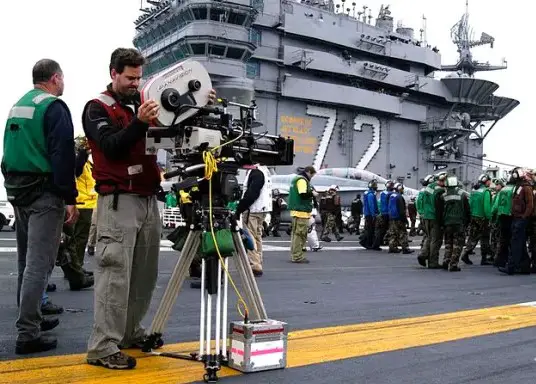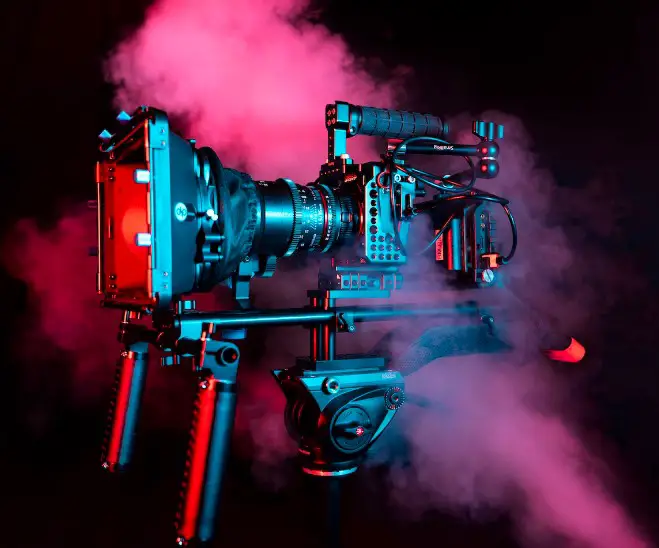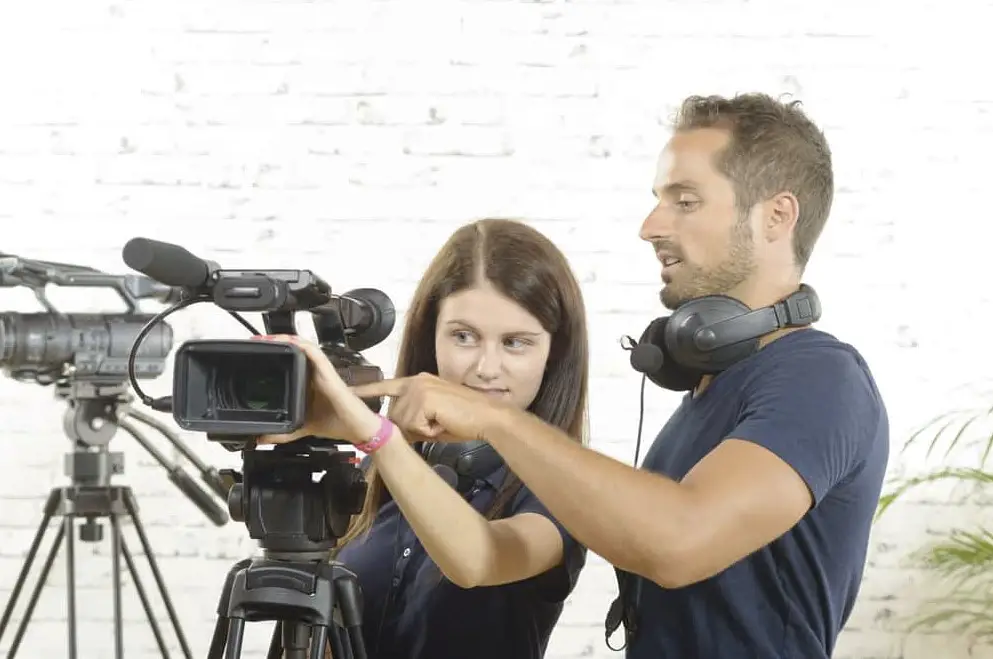The roles of cinematographer and director stand as pivotal pillars in the world of film production, each wielding unique influence over the creation of cinematic masterpieces. While these positions may intertwine and collaborate closely, they embody distinct responsibilities, skill sets, and creative visions. The distinction between the two is crucial for anyone looking to understand the intricacies of filmmaking and the collaborative nature of crafting a film.
A cinematographer, often referred to as the director of photography, is primarily responsible for the visual aspects of a film, including camera work and lighting, ensuring that every frame aligns with the director’s vision. The director, on the other hand, is the creative overseer of the film, responsible for guiding the film’s artistic and dramatic aspects, managing the cast and crew, and bringing the story to life. Together, they translate scripts into compelling visual narratives, but their roles in this creative process are distinctly different.
This synergy between the cinematographer and director is foundational to the filmmaking process, requiring not just technical skills but a deep understanding of storytelling and visual artistry. The relationship is a dance of creativity and logistics, where each role complements the other, working towards the shared goal of creating a cohesive and impactful cinematic experience. By exploring these roles separately, we can appreciate the nuance and complexity behind the films that captivate audiences around the world.

Film Basics
Role Overview
Cinematographer
Definition and Key Responsibilities
A cinematographer, also known as the Director of Photography (DP), is the visual storyteller behind a film. They are responsible for translating the director’s vision into the visual language that appears on screen. Key responsibilities include:
- Camera Work: Choosing the right camera, lens, and angles to tell the story.
- Lighting: Crafting light to set the mood, tone, and atmosphere.
- Composition: Deciding on the frame’s composition to guide the audience’s focus.
- Color Palette: Working on the film’s color scheme to enhance its emotional impact.
Director
Definition and Key Responsibilities
A director is the creative force behind a film, responsible for bringing the story to life from script to screen. Their responsibilities encompass:
- Vision: Developing and maintaining the film’s artistic and stylistic vision.
- Casting: Selecting actors who best fit the characters.
- Guidance: Directing actors on how to portray their characters.
- Decision Making: Making final decisions on all aspects of film production.
Core Responsibilities
Vision and Storytelling
Director’s Domain
Crafting the Narrative, Character Development
The director’s primary focus is on storytelling and character development. They ensure the script’s narrative is compelling and coherent, guiding actors to bring characters to life. Key aspects include:
- Developing backstories for characters to ensure depth.
- Crafting scenes to advance the story effectively.
- Encouraging improvisation when it enhances character portrayal.
Cinematographer’s Canvas
Visual Storytelling, Camera Angles, Lighting
Cinematographers contribute to the story through visual means – how a scene is lit, framed, and shot can significantly impact the narrative. They focus on:
- Using camera angles to reflect character dynamics.
- Manipulating lighting to evoke specific moods.
- Selecting lenses that best capture the scene’s essence.
Collaboration
Working Together
The Dynamic Relationship Between Director and Cinematographer
A successful film relies on the strong collaboration between the director and cinematographer. This partnership is built on:
- Shared Vision: Aligning their creative visions for the film.
- Mutual Respect: Valuing each other’s expertise and decisions.
- Open Communication: Discussing ideas and concerns openly.
Communication
Ensuring Vision Alignment, Problem-Solving
Effective communication is key to resolving the inevitable challenges that arise during filming. This includes:
- Regular meetings to discuss scenes and shots.
- Being open to feedback from both sides.
- Finding creative solutions to technical and artistic problems.
Creative Process
Pre-Production
Director’s Blueprint
Script Analysis, Casting, Storyboard
Pre-production is where the director lays the groundwork for the film. Steps include:
- Analyzing the script to understand its core message.
- Casting the right actors for each role.
- Creating a storyboard to visualize scenes.
Cinematographer’s Prep
Visual Style, Scouting Locations, Technical Requirements
The cinematographer also begins their preparation during pre-production, focusing on:
- Developing a visual style that matches the director’s vision.
- Scouting locations to find the perfect setting.
- Determining technical requirements such as cameras and lighting equipment.
On Set
Director in Action
Leading the Cast and Crew, Performance Focus
On set, the director is fully engaged in bringing the vision to life. This involves:
- Directing actors to ensure authentic performances.
- Leading the crew to keep production on track.
- Adjusting scenes as needed for the best outcome.
Cinematographer’s Execution
Camera Operation, Lighting Setup, Shot Composition
Simultaneously, the cinematographer executes their visual plan through:
- Operating the camera to capture the desired shots.
- Setting up lighting to create the intended atmosphere.
- Composing shots to visually tell the story.
Post-Production
Director’s Cut
Editing, Narrative Pacing, Overall Cohesion
In post-production, the director oversees the editing process, ensuring the film’s pacing and narrative flow smoothly. This includes:
- Selecting the best takes for each scene.
- Editing scenes to maintain narrative momentum.
- Ensuring the film’s cohesion from start to finish.
Cinematographer’s Finishing Touches
Color Grading, Visual Effects Oversight
The cinematographer may also be involved in post-production, particularly in:
- Color grading to finalize the film’s visual tone.
- Overseeing visual effects to ensure they align with the visual style.
- Adjusting final shots for visual consistency.

Distinct Skill Sets
Technical Expertise
Cinematographer
The cinematographer plays a crucial role in the filmmaking process, bringing technical expertise to the visual aspects of storytelling. Their mastery over camera technology, lighting design, and shot framing distinguishes them as vital to the creation of a film’s aesthetic. Here’s how:
- Camera Technology: Understanding the latest advancements in cameras and how different types can influence the look of the film. Choices between digital and film, sensor sizes, and frame rates all fall under the cinematographer’s purview.
- Lighting Design: Lighting is not just about ensuring scenes are visible; it’s about shaping mood, atmosphere, and directing the audience’s focus. Cinematographers must know how to manipulate light creatively to enhance the narrative.
- Shot Framing: The composition of each shot involves deciding what the audience sees and what they don’t. This requires a deep understanding of visual storytelling principles and how to use them to support the story.
Artistic Vision
Director
The director is the creative leader of a film, guiding its artistic direction from concept to completion. Their ability to tell compelling stories, direct actors, and make critical creative decisions is essential. Here’s what sets directors apart:
- Storytelling: The essence of a director’s role is to tell a story that resonates with audiences. This involves not just working with the script but interpreting it in a way that brings it to life on screen.
- Actor Direction: Directors work closely with actors to develop characters and performances that align with the film’s vision. This involves deep empathy and the ability to communicate effectively.
- Creative Decisions: Every aspect of a film, from the set design to the soundtrack, influences its overall impact. Directors must make decisions that unify these elements into a coherent and engaging whole.
Case Studies
Iconic Collaborations
The relationship between a director and their cinematographer can be the defining factor in a film’s visual and emotional impact. Here are examples of iconic director-cinematographer collaborations and their contributions to cinema:
- Steven Spielberg and Janusz Kamiński: Since their first collaboration on “Schindler’s List,” Spielberg and Kamiński have worked together to create some of the most visually stunning films in recent history, with Kamiński’s lighting and camera work complementing Spielberg’s storytelling prowess.
- Christopher Nolan and Wally Pfister: From “Memento” to “Inception,” Nolan and Pfister have pushed the boundaries of narrative and visual storytelling. Pfister’s innovative camera techniques and use of IMAX cameras have become a hallmark of Nolan’s films, creating immersive cinematic experiences.
- Coen Brothers and Roger Deakins: This partnership has produced visually distinctive films that are immediately recognizable. Deakins’ mastery of light and composition has brought the Coen Brothers’ unique narratives to life, from the stark landscapes of “No Country for Old Men” to the retro Hollywood glam of “Hail, Caesar!”
These collaborations highlight the symbiotic relationship between director and cinematographer, where mutual respect and shared creative vision lead to cinematic excellence.
Industry Perspectives
Evolving Roles
The advent of digital technology and the rise of independent filmmaking have significantly impacted the traditional roles of the director and cinematographer. Here’s how:
- Digital Technology: The shift from film to digital has democratized filmmaking, allowing for more experimentation and flexibility. Digital cameras and post-production tools have given filmmakers unprecedented control over the visual aspects of their films. This has blurred the lines between the director’s and cinematographer’s roles, as directors can now participate more directly in the visual storytelling process.
- Independent Filmmaking: In the world of independent cinema, budget constraints often require individuals to wear multiple hats. It’s not uncommon for directors to act as their own cinematographers or for cinematographers to have a more significant say in the creative direction of a film. This has led to a more collaborative and less hierarchical approach to filmmaking.
These trends suggest that while the core responsibilities of directors and cinematographers remain distinct, the boundaries between their roles are becoming more fluid. The ability to adapt to these changes while maintaining a clear vision and effective collaboration is key to success in the evolving landscape of film production.

Frequently Asked Questions
Can a director also be a cinematographer?
Yes, a director can also be a cinematographer, especially in the realms of independent filmmaking and lower-budget productions. This dual role allows for a more hands-on approach to visual storytelling, giving the director full control over the visual narrative. However, managing both positions is challenging and requires a deep understanding of both storytelling and technical visual elements.
How does a cinematographer influence a film’s mood?
A cinematographer influences a film’s mood through lighting, composition, camera movement, and color palette. These elements work together to evoke specific emotions and atmospheres, complementing the narrative. For instance, low-key lighting can create suspense or fear, while warm colors might evoke nostalgia or comfort. The cinematographer’s choices directly impact the viewer’s emotional response to the story.
What makes a good director-cinematographer collaboration?
A good director-cinematographer collaboration is characterized by clear communication, mutual respect, and a shared vision for the film. Successful collaborations often involve thorough pre-production discussions to align the director’s narrative vision with the cinematographer’s visual strategy. Trust and openness to creative input from both sides also significantly contribute to a fruitful partnership, enhancing the film’s artistic coherence.
How do technology advancements affect these roles?
Technological advancements, such as digital cameras and CGI, have expanded the creative possibilities for cinematographers and directors, allowing for more ambitious shots and storytelling techniques. These tools can streamline workflows and enhance visual effects, but they also require professionals to continuously update their skills. While technology has blurred some traditional boundaries, the core responsibilities and creative input of each role remain distinct.
Conclusion
The roles of cinematographer and director are instrumental in the filmmaking process, each contributing uniquely to the art of storytelling through film. While their duties may overlap and require a deep level of collaboration, understanding the specific responsibilities and creative inputs of each position reveals the complexity and artistry involved in bringing a cinematic vision to life. It’s the harmonious partnership between the director’s narrative guidance and the cinematographer’s visual storytelling that ultimately shapes the memorable experiences we cherish in cinema.
This exploration not only highlights the significance of each role but also celebrates the collaborative spirit of filmmaking. As audiences, we often witness the final product, oblivious to the intricate dance of creativity, technical skill, and vision that occurs behind the scenes. Recognizing the distinct roles of the cinematographer and director allows us to appreciate the multitude of talents and the collaborative effort that contribute to the magic of cinema.
